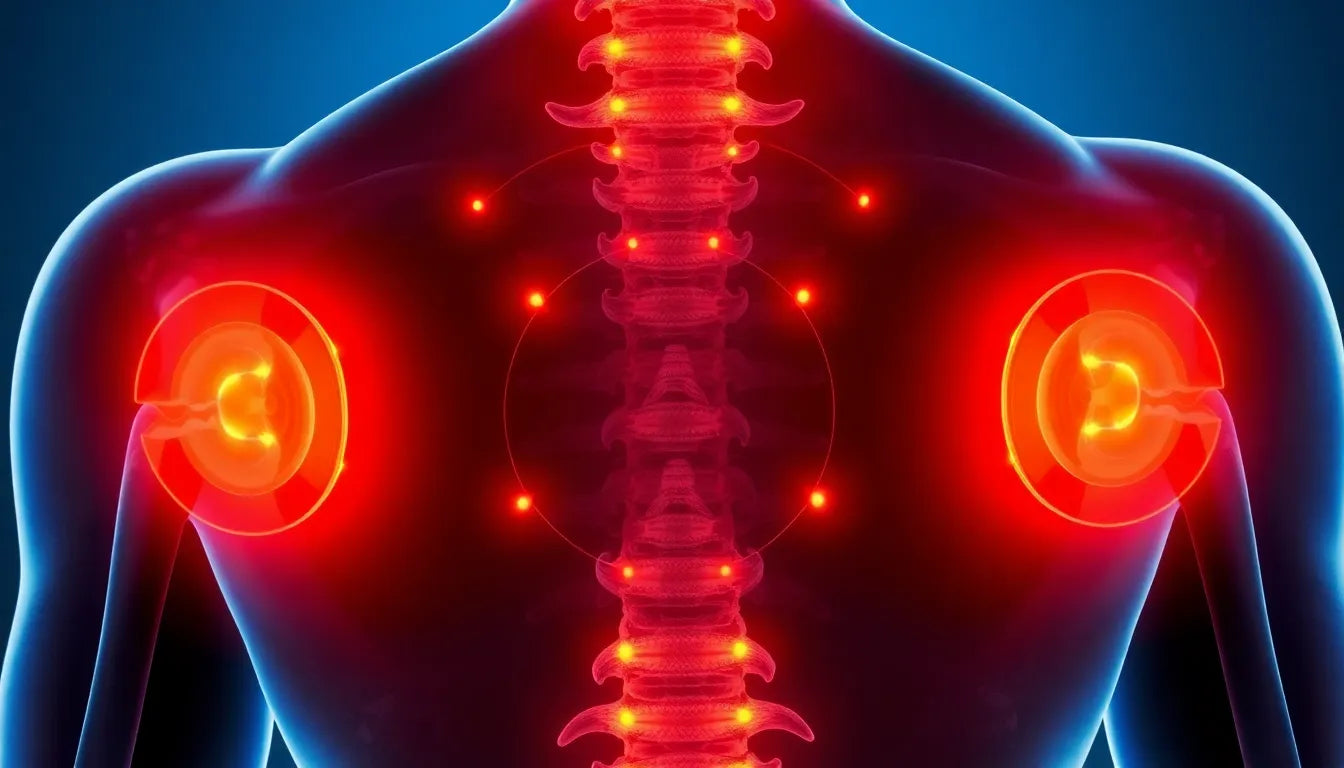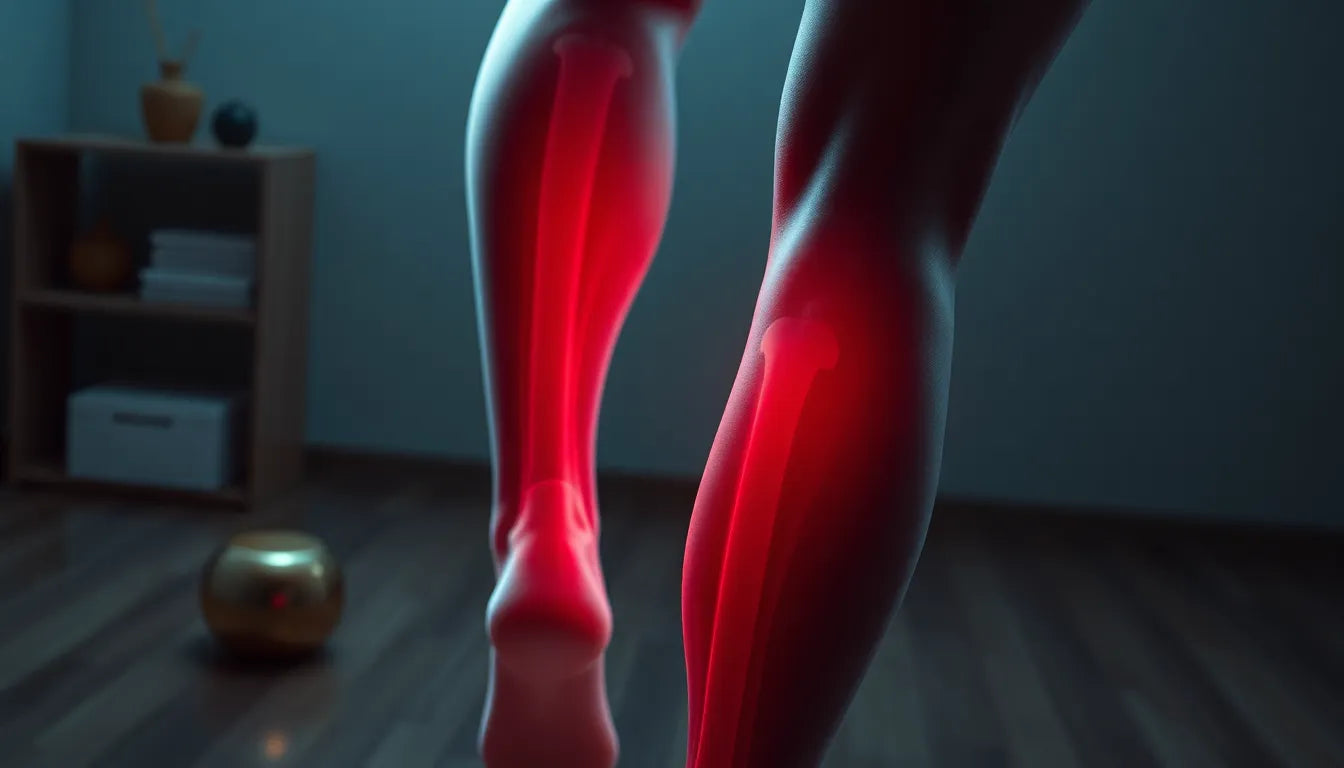In the hustle and bustle of everyday life, it's easy to overlook the subtle signs our bodies send us. However, when it comes to back health, paying attention to these signals is crucial. One common condition that can significantly impact daily activities is a herniated disc. Understanding its prevalence and effects is the first step towards addressing it effectively.
A herniated disc occurs when the soft inner gel of a spinal disc pushes through a tear in its tougher exterior. This can lead to discomfort, pain, and even more severe neurological symptoms. The spine, a complex structure of bones, nerves, and discs, relies on healthy discs to cushion the vertebrae and facilitate movement. When a disc herniates, it can press on nearby nerves, causing pain that can range from mild to debilitating.
Why early detection matters
Identifying a herniated disc early on is essential for effective management and treatment. The sooner you recognize the signs, the quicker you can seek appropriate care, potentially preventing further complications. While some herniated discs may cause noticeable symptoms, others might be more subtle or even asymptomatic. This makes awareness of potential signs all the more important.
So, how can you tell if you have a herniated disc? Recognizing the symptoms is the first step. Common indicators include sharp, shooting pain that may localize to the back, arm, or leg, depending on which disc is affected. This pain can radiate to the buttocks, thighs, calf, or foot, often described as burning or stabbing in nature. Additionally, neurological symptoms such as numbness, tingling, or weakness in the limbs can occur, depending on which nerve is impacted.
Understanding these symptoms and their implications can empower you to take action. While some individuals may experience significant discomfort, others might only notice mild symptoms or none at all. In such cases, a herniated disc might only be discovered incidentally during imaging for other issues. This underscores the importance of being proactive about your spinal health and seeking medical advice if you suspect something is amiss.
By being informed and vigilant, you can better navigate the complexities of spinal health and take steps to maintain your well-being. In the following sections, we'll delve deeper into the specific symptoms of a herniated disc and the diagnostic processes that can confirm its presence. Stay tuned to learn more about how to effectively manage and treat this common condition.
Common symptoms of a herniated disc
When it comes to identifying a herniated disc, understanding the range of symptoms is crucial. These symptoms often vary depending on the location of the affected disc and the nerves involved. One of the most telling signs is pain, which can manifest in different ways. Individuals may experience sharp, shooting pain that is localized to the back, arm, or leg. This pain can be particularly intense and may radiate to areas such as the buttocks, thighs, calf, or even the foot, often described as burning or stabbing in nature. This radiating pain occurs because the herniated disc may press on nearby nerves, sending pain signals along their pathways.
In addition to pain, neurological symptoms can also indicate the presence of a herniated disc. These symptoms may include numbness, tingling, or weakness in the limbs served by the affected nerve. For instance, if a herniated disc impacts a nerve in the lower back, it might lead to weakness or a tingling sensation in the legs. The variability in symptoms is largely due to which specific disc and nerve are involved, highlighting the importance of a detailed evaluation by a healthcare professional.
Interestingly, not all herniated discs cause noticeable symptoms. Some individuals may have a herniated disc without experiencing any discomfort, often discovered incidentally during imaging for unrelated medical issues. This asymptomatic nature underscores the importance of being mindful of subtle changes in your body and seeking medical advice when necessary.
Diagnosis process for a herniated disc
Determining whether you have a herniated disc typically involves a comprehensive diagnostic process. The journey begins with a detailed medical history and physical examination. During this initial assessment, healthcare providers focus on understanding your pain patterns, checking your reflexes, assessing muscle strength, and evaluating any sensory changes. This thorough examination helps narrow down the potential causes of your symptoms and guides further testing.
Imaging techniques play a pivotal role in confirming the presence of a herniated disc. An MRI (Magnetic Resonance Imaging) is considered the gold standard for diagnosing this condition. It provides detailed images of the spine and nerves, allowing doctors to visualize the herniated disc and its effect on surrounding structures. In some cases, a CT scan may be used to visualize bone and certain disc issues, while X-rays can help rule out other causes of back pain, though they do not show the disc itself.
For more complex cases, a myelogram may be performed. This involves using a dye-enhanced X-ray or CT scan to provide a clearer picture of the spinal canal and nerves. Additionally, if nerve damage is suspected, nerve function tests such as electromyography (EMG) and nerve conduction studies may be conducted to assess the electrical activity of muscles and the speed of nerve signals.
The combination of these diagnostic tools ensures a comprehensive evaluation, helping healthcare providers make an accurate diagnosis and develop an effective treatment plan tailored to your specific needs. Understanding these processes empowers you to engage actively in your healthcare journey, ensuring the best possible outcomes.
As you navigate the complexities of diagnosing a herniated disc, it's essential to remain proactive about your spinal health. In the next section, we'll explore when to seek emergency care and how ergonomic solutions can aid in managing symptoms. Stay informed and take charge of your well-being.
When to seek emergency care for a herniated disc
While many herniated discs can be managed with appropriate care, certain symptoms warrant immediate medical attention. Recognizing these "red flag" symptoms is crucial to prevent serious complications. If you experience sudden bladder or bowel dysfunction, or rapidly worsening weakness in your limbs, seek emergency care immediately. These symptoms may indicate a severe nerve compression, such as cauda equina syndrome, which requires urgent intervention to prevent permanent damage.
Ergonomic insights for managing herniated disc symptoms
Incorporating ergonomic solutions into your daily routine can significantly alleviate the discomfort associated with a herniated disc. Ergonomic aids, such as lumbar support pillows, adjustable desks, and ergonomic chairs, are designed to support the natural curve of the spine, reducing pressure on the discs. When sitting, ensure your back is fully supported and your feet are flat on the floor. Stand up and stretch regularly to relieve tension and improve circulation.
Additionally, focus on maintaining good posture whether sitting, standing, or lifting objects. Engage in exercises that strengthen the core muscles, as a strong core provides better support for the spine, potentially reducing the risk of further disc herniation. By integrating these ergonomic practices, you can create a more supportive environment that helps manage symptoms and promotes spinal health.
Frequently Asked Questions
What does a herniated disc feel like?
A herniated disc often causes sharp, shooting pain that can be localized to the back, arm, or leg, depending on the location of the affected disc. This pain may radiate to the buttocks, thighs, calf, or foot and is often described as burning or stabbing in nature. In addition to pain, you may experience numbness, tingling, or weakness in the limbs served by the affected nerve.
Can a herniated disc heal on its own?
Yes, in many cases, a herniated disc can heal on its own over time. The body may reabsorb the protruding material, reducing pressure on the nerves. Recovery can be aided by rest, physical therapy, and pain management techniques. However, the healing process varies for each individual, and some cases may require medical intervention.
How long does it take to recover from a herniated disc?
The recovery time for a herniated disc can vary widely. For many, symptoms improve within a few weeks to a few months with conservative treatment. Factors influencing recovery include the severity of the herniation, the individual's overall health, and adherence to treatment recommendations. In some cases, symptoms may persist longer, requiring ongoing management or surgical intervention.
Are there non-surgical treatments for a herniated disc?
Yes, several non-surgical treatments are available for managing a herniated disc. These include physical therapy to strengthen the muscles supporting the spine, pain management with medications or injections, and lifestyle modifications such as ergonomic adjustments and exercise. These approaches aim to relieve symptoms and improve function without the need for surgery.
When should I see a doctor for back pain?
You should see a doctor if your back pain persists for more than a few weeks, is severe, or is accompanied by symptoms such as numbness, tingling, or weakness in the limbs. Additionally, seek medical advice if you experience sudden bladder or bowel dysfunction or rapidly worsening weakness, as these may indicate a need for urgent care. Early evaluation and treatment can help prevent complications and improve outcomes.
Sources
- Mayo Clinic. "Herniated disk - Symptoms and causes."
- Cleveland Clinic. "Herniated Disk (Bulging Disk): Symptoms & Treatment."
- WebMD. "Could You Have a Herniated Disk? Symptoms and Diagnosis."
- Penn Medicine. "Herniated Disc - Symptoms and Causes."
- Weill Cornell Medicine. "Diagnosing and Treating a Herniated Disc."
- University of Maryland Medicine. "A Patient's Guide to Lumbar Herniated Disc."


















